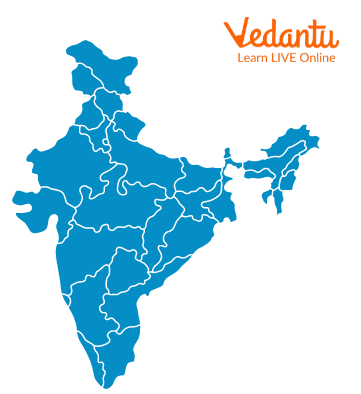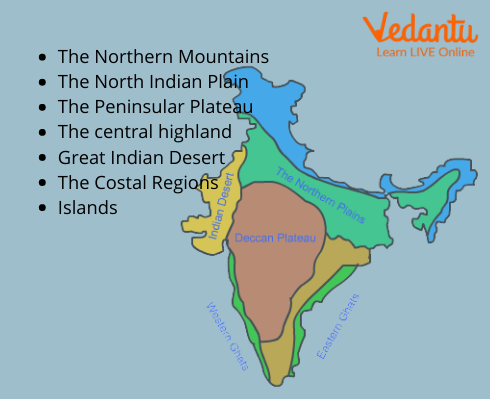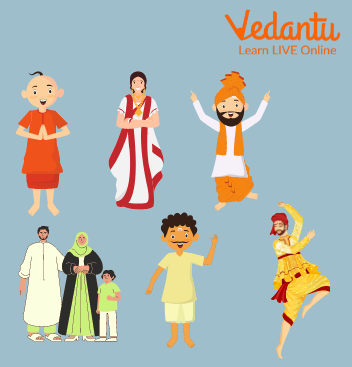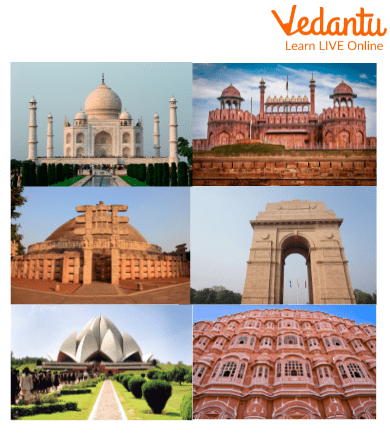




Let’s Learn More About India!
India is the seventh largest country in the world. It is also the second most highly populated country in the world after China. It is a peninsular country which is surrounded by water from three sides. There are twenty-eight States in total with eight Union Territories covering an area of 3.28 million square kilometres. Andaman and Nicobar Islands and Lakshadweep Islands also form a part of India.
The capital of India is New Delhi. Rajasthan is the largest state and Goa is the smallest state in India. Uttar Pradesh is the most populated state in India. The neighbouring countries of India are Bhutan, Nepal, Myanmar, Bangladesh, Pakistan, China, and Sri Lanka. In this article, we will discuss about amazing facts about india, unknown facts about india and fun facts about india.

Map of India
India is a diverse country in terms of culture, geography, religion, language, food, languages, etc. It is also a place for various species and natural resources. Different kinds of people live and follow different practices and cultures. Let us look at interesting facts about India for kids from every aspect.
Amazing Facts About India:- Physical Divisions of India
By having a look at the map of India, we can see that it is diamond-shaped. It has various kinds of landforms like plains, mountains, plateaus, deserts, and islands which affect the climate, soil, and rainfall of India. The Northern part of India has the Himalayas which is the highest mountain range in the world. The plain area starts from the south of the Himalayas.

Physical Divisions of India
The western part of India is the densest area and falls in the state of Rajasthan. Southern India is the coastal plains which are situated adjacent to the sea. Andaman and Nicobar Islands and Lakshadweep Islands are the islands of India covered with water from all sides. These are some of the interesting facts about India in terms of Physical Divisions
Cultural Diversity of India
India is known for its diversity in culture, language, food, clothes, etc. People speak different languages like Hindi, English, Urdu, Punjabi, Sindhi, Sanskrit, Tamil, Telugu, etc. Usually, men wear trousers, shirts, kurta, and pyjamas while women wear sarees, salwar, kameez, jeans, tops, etc. In India, people follow various religions like Hinduism, Islam, Jainism, Buddhism, etc.

Cultural Diversity in India
Another fun fact about India is that the food also varies from place to place and some of the dishes are very popular worldwide. India celebrates several festivals like Diwali, Holi, Eid, Pongal, Onam, etc. Apart from this, it also celebrates its Independence Day on August 15 and Republic Day on 26th January every year.
Unknown Facts About India: Famous Monuments of India
India is the most famous tourist place in the world. People from all over the world visit India to see all the historical and cultural monuments. Taj Mahal in Agra is among the seven wonders in the world and attracts various tourists.
Red Fort in Delhi is a historical monument of India. Gateway of India and Elephanta Caves are the most famous places in Mumbai to visit. Charminar and Mecca Masjid are the most visited places in Hyderabad.

Monuments in India
Rajasthan is also famous for many historical monuments like Hawa Mahal, various forts and palaces. Southern India is known for beautiful temples, monuments, beaches, natural forests, etc. Apart from all these, the seven eastern states are also rich in historical and cultural monuments. These are some of the fun facts about India.
Other Important Interesting Facts About the Climate of India
India has five main seasons which include the summer season, spring season, rainy season, autumn season, and winter season. The Summer season falls in May and June, the Rainy season falls from July to September, the Autumn falls in October, the Winter season falls from November to January, and February and March are the month's offspring.
The climate of India also varies from East to West and North to South. While the North experiences severe cold due to the Himalayas, the Western part is dry and hot due to deserts. The climate in the Southern part is humid due to coastal regions.
Summary
From the article, India facts for kids, we have learned that India is a country with a rich culture, history, and heritage, along with incredible diversity. India has seen many great contributions from artists, innovators, and entrepreneurs as well as from some very influential figures in world history. There are worldwide Indian communities where you can connect with other people that share your interest in India and its culture or even learn about it for the first time! There are deserts like Thar, islands like Andaman and Nicobar Islands, and beautiful monuments like the Taj Mahal, Hawa Mahal, etc., in India. This makes India a beautiful country. We have also discussed interesting facts about India.
FAQs on India Facts for Kids
1. What are some interesting facts about India for kids?
India is a country full of amazing things! Here are a few fun facts to get you started:
- The game of Snakes and Ladders was invented in ancient India.
- India is home to the Taj Mahal, one of the Seven Wonders of the World.
- It has the largest postal network on the planet, including a floating post office!
- India gave the world the concept of zero (0) and the decimal system.
2. What are the national symbols of India?
India has several national symbols that represent its identity and values. The main ones are:
- National Animal: The Royal Bengal Tiger
- National Bird: The Peacock
- National Flower: The Lotus
- National Tree: The Banyan Tree
- National Fruit: The Mango
3. When did India get its independence?
India gained its independence from British rule on August 15, 1947. This is a very important day in our history, and we celebrate it every year as Independence Day with flag-hoisting ceremonies and patriotic songs.
4. What makes the Indian flag special?
The Indian flag, also called the Tiranga (meaning tricolour), is special because each part has a meaning. The top saffron stripe stands for courage, the middle white stripe for peace and truth, and the bottom green stripe for growth and fertility. The blue wheel in the centre, the Ashoka Chakra, represents the law and constant progress.
5. Why is the Bengal Tiger the national animal of India?
The Bengal Tiger was chosen as India's national animal because it symbolises strength, grace, and immense power. It also highlights the importance of protecting India's rich and diverse wildlife. By making it a national symbol, the country draws attention to the need for tiger conservation.
6. Does it snow in India?
Yes, it does! While many parts of India are warm, the northern states located in the Himalayan mountain range receive heavy snowfall during winter. Places like Shimla, Manali, and Gulmarg become beautiful winter wonderlands.
7. What are some of the major rivers that flow through India?
India is home to many large and important rivers. Some of the most well-known are the Ganga, Yamuna, Brahmaputra, Godavari, Krishna, and Kaveri. These rivers are vital for providing water for drinking, farming, and daily life to millions of people.
8. Why is India often called a 'land of festivals'?
India is called a 'land of festivals' because of its incredible cultural and religious diversity. People from many different faiths live here, and each community celebrates its unique festivals with great joy. This is why you can see colourful celebrations like Diwali, Eid, Christmas, Holi, and Baisakhi happening throughout the year across the country.









